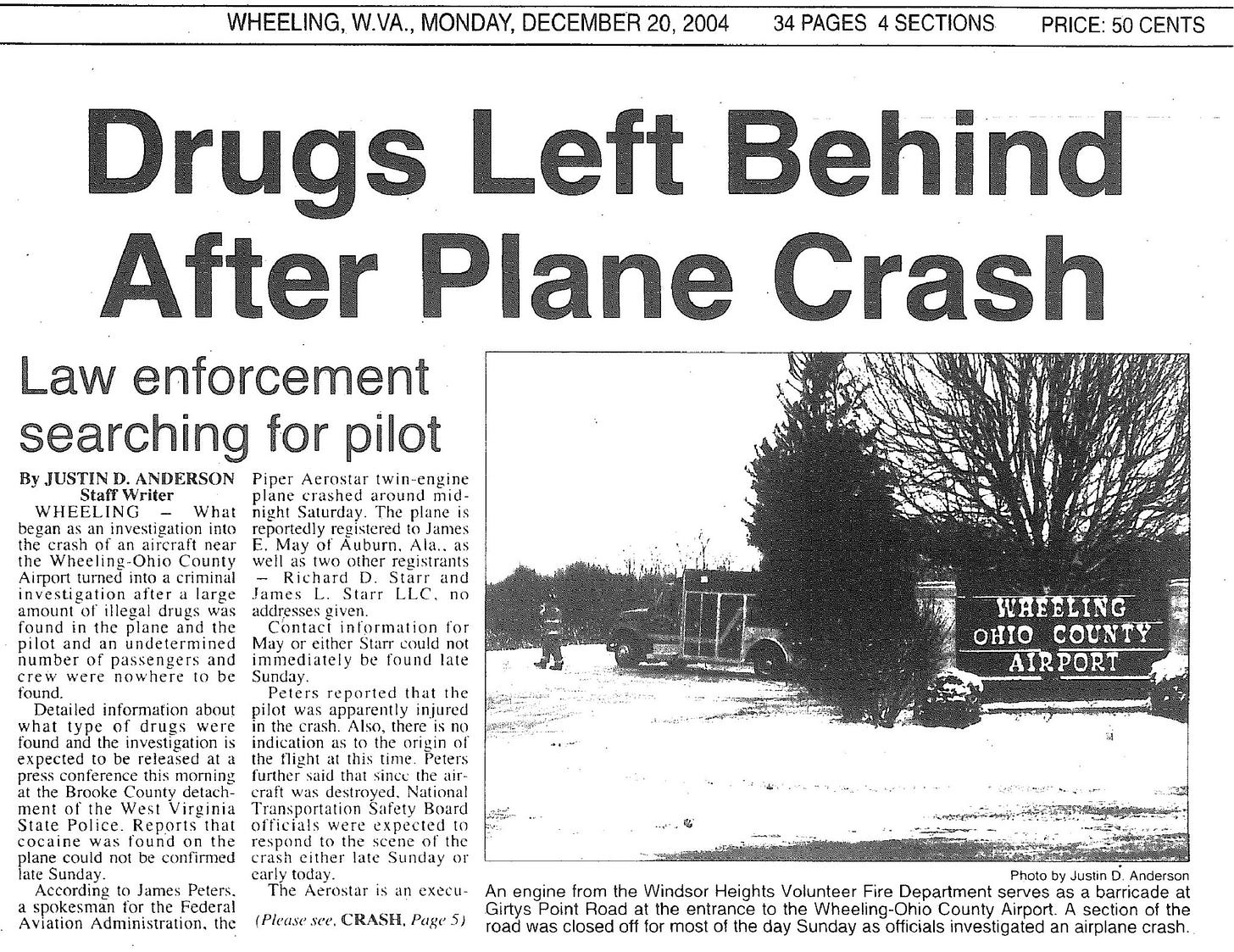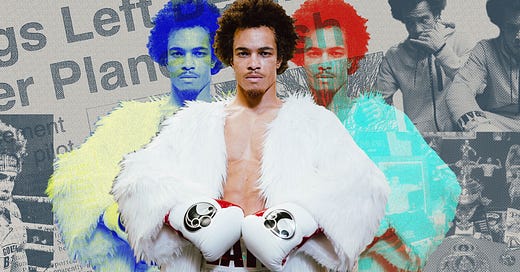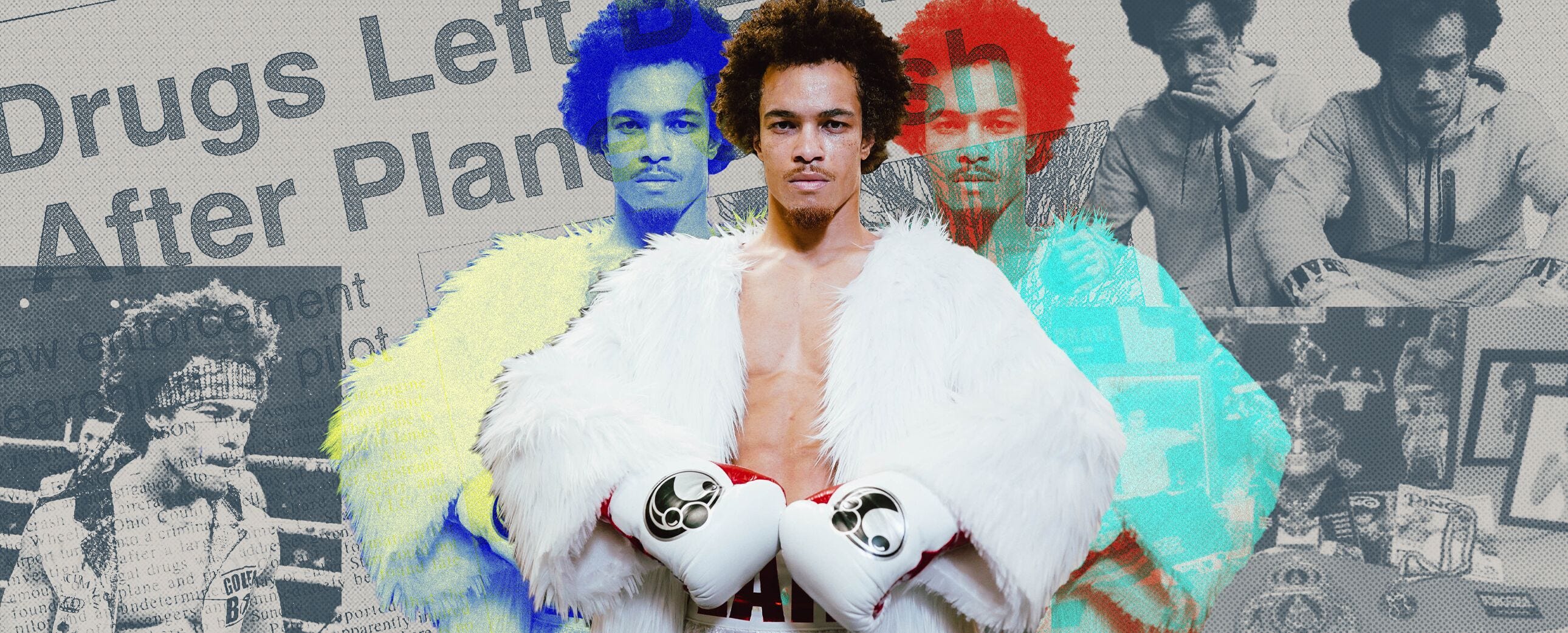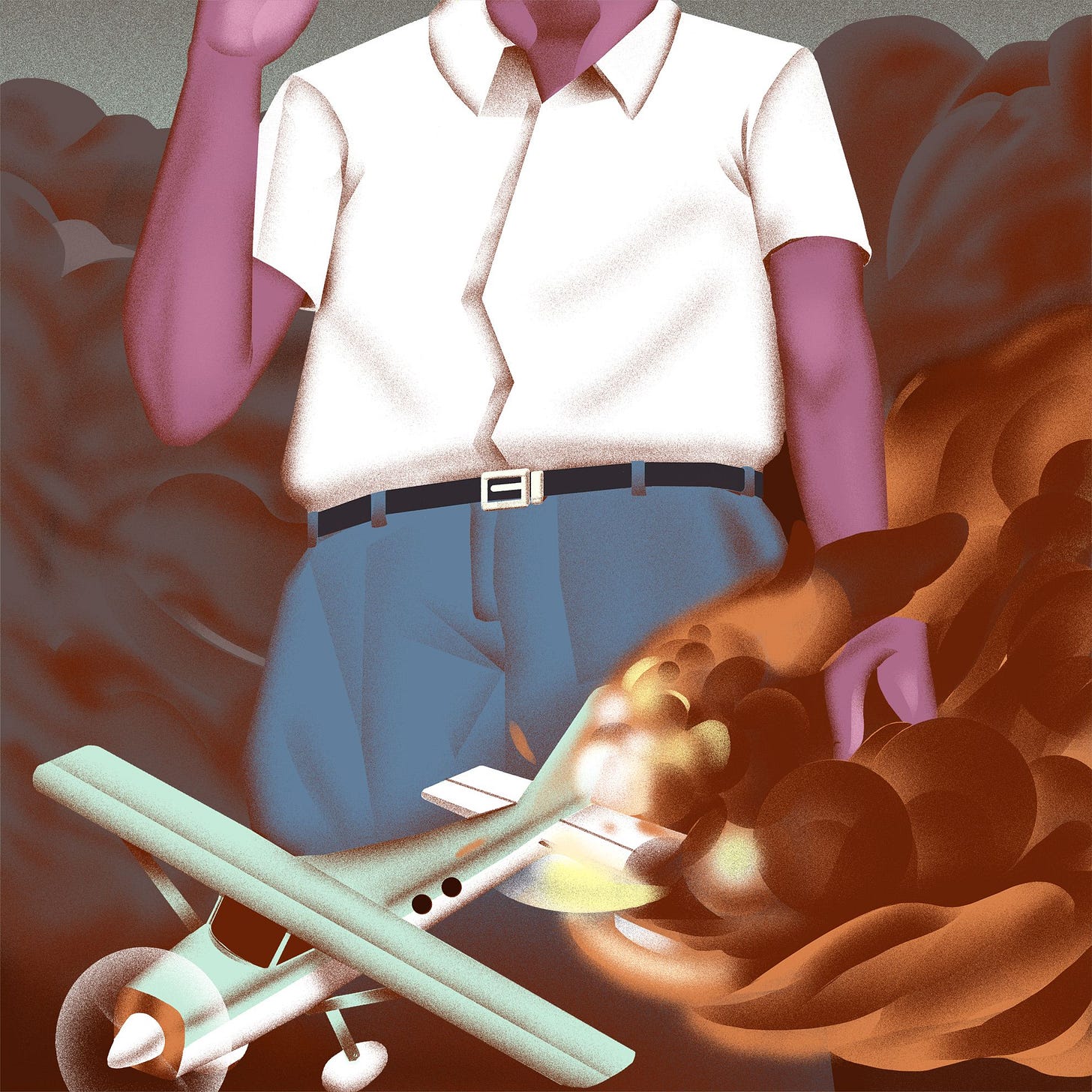The Astonishing Rise of “Blair the Flair”
He’s been a Beverly Hills rich kid, a teen on the run with his drug-kingpin dad, and a homeless father scraping to get by. Next stop for Blair Cobbs: world champion boxer.
The night of December 18, 2004, began as an ordinary evening for Blair Cobbs’s father, Eugene. At 33, the elder Cobbs was already a seasoned veteran of the drug trafficking trade. He was flying solo to his hometown of Philadelphia, having taken off from Compton Airport near Los Angeles. After a quick fuel-up in Missouri, it was somewhere over West Virginia that things began to go bad for the self-taught pilot. He was flying above a snowy, wooded landscape when mechanical problems compelled him to scramble for the nearest landing strip. He was forced to attempt an emergency touchdown at the Wheeling Ohio County Airport. It was going to be a tricky landing, as the tower was closed and lighting was limited.
Eugene descended late, missed the runway, and skidded on the ramp, before regaining altitude and hurtling into a ravine in the woods surrounding the airport. Miraculously, he exited the aircraft basically uninjured, save a minor head wound. But he had little time to linger. It’s unknown whether he turned to consider the plane’s $24 million haul of cocaine, but what he did do was flee through the woods, leaving it all behind. When he came to a road near the airport entrance, he flagged down the first driver he saw. He waved a wad of $100 bills and asked for a ride. The driver said that Eugene, who asked where exactly he was, had a gash on his head. Airport officials would not discover the wreckage until early the next morning, when a worker on a routine field check noticed that a section of the eight-foot perimeter fence near runway 21 was damaged. The plane was then spotted, and proper authorities and responders were dispatched. Airport manager Thomas Tominack’s initial reaction was that the pilot was lucky to have survived, as portions of the aircraft, including a detached wing, were strewn throughout the vicinity.
“The survival rate at that particular crash scene would have been very, very, low,” Tominack says. “It was a bad crash.” He notes that the plane didn’t even land at the airport, but rather bounced off the ramp before hitting the top of the fence and landing in a ravine amid a patch of what locals call “tanglefoot.” The second thought responders had was that there sure was a hell of a lot of cocaine on board. “I know one thing,” Sheriff Bernie Kazienko told the Pittsburgh Post-Gazette, “it was the most dope I’d ever seen.” Indeed, it was the largest drug seizure ever in West Virginia at the time, with 525 pounds inside the airplane. According to the Northern District of West Virginia’s District Attorney’s Office, investigators “uncovered numerous packages of cocaine wrapped in various forms, including duct tape, saran wrap, vacuum sealed bags, and even as Christmas presents.” Photographs were taken of the tall stacks of cocaine. Longtime West Virginia lawman Richard Ferguson recounts that “it was like after somebody killed a large bear or something,” with everyone wanting their turn to pose with the evidence.
Eugene’s first order of business after the crash was to get the hell out of West Virginia. He checked in to a Holiday Inn Express outside of Weirton under the name of Marquis Munroe. He stayed for one night before making his way out of town. Meanwhile, investigators began piecing things together at the crash site. With no pilot present, they moved on to the plane itself. Records showed that the Aerostar had been purchased in Alabama for $290,000 in cash. The invoice was signed without a personal signature, only the name of a company, Pacific Designers Inc., out of Beverly Hills. The Drug Enforcement Agency (DEA) had been keeping tabs on the plane, and by the time of the crash they were familiar with the identity of the pilot, according to United States Marshal Terry Moore.
The Federal Aviation Administration (FAA) had also been keeping an eye on Eugene, who was described as a notoriously bad pilot known to frequent small, quiet airports where he could fuel up and depart quickly. According to the Post-Gazette, the FAA had put his plane on a watch list, having cited him on four occasions since 2001, offenses including reckless flying, disregarding air traffic control signals, and lying about his medical status. The FAA had ordered him to retake his flying exam. Eugene had refused, and his pilot’s license had been revoked. He continued to fly, however, using his plane to deliver drugs all over the country. Prior to the crash, federal agents in Philadelphia, Los Angeles, Phoenix and Chicago had all been looking into his cocaine distribution business.

“On December 20, 2004, the DEA was able to obtain a warrant for Mr. Cobbs’s arrest,” says Moore. Subsequently, “There were many attempts to locate him throughout the U.S. He had ties to Philadelphia and California, so pretty much the span of the United States. And nobody was able to find him at the time … Mr. Cobbs was a fugitive from justice.” Eugene Cobbs went on the lam. Back in California, his son, Blair, was about to have his world changed forever.
Keep reading with a 7-day free trial
Subscribe to Narratively to keep reading this post and get 7 days of free access to the full post archives.






